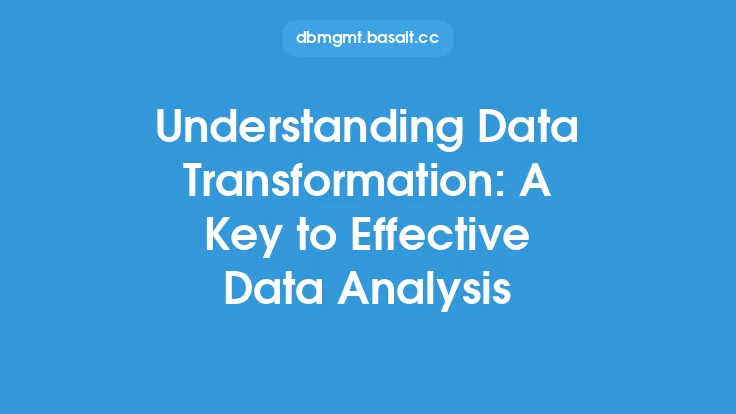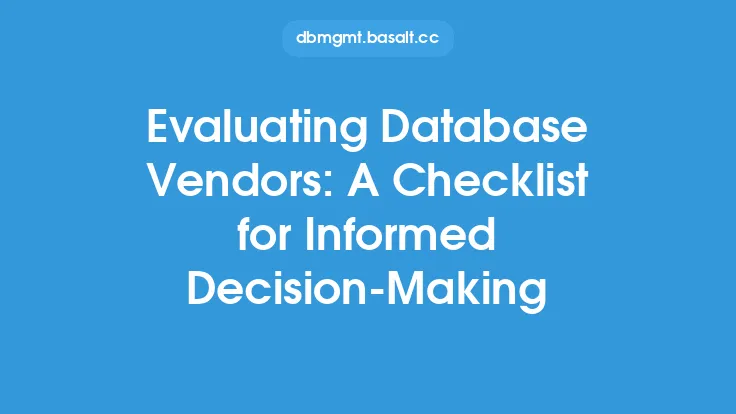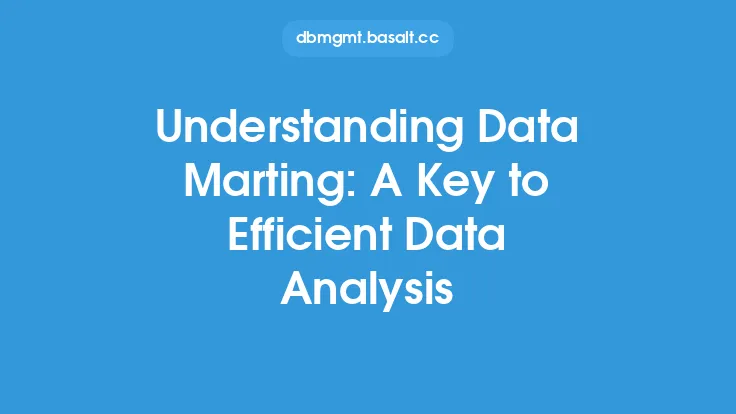Data aggregation is a crucial process in data analysis that involves collecting and combining data from multiple sources into a single, unified view. This process enables organizations to gain a deeper understanding of their data, identify trends and patterns, and make informed decisions. At its core, data aggregation is about transforming raw data into meaningful information that can be used to drive business outcomes.
What is Data Aggregation?
Data aggregation is the process of gathering and combining data from various sources, such as databases, spreadsheets, or external data providers. This data is then processed and transformed into a summarized format, making it easier to analyze and understand. Data aggregation can be performed using various techniques, including grouping, filtering, and sorting. The goal of data aggregation is to provide a comprehensive view of the data, highlighting key trends, patterns, and insights that can inform business decisions.
Benefits of Data Aggregation
The benefits of data aggregation are numerous. By combining data from multiple sources, organizations can gain a more complete understanding of their business, customers, and market trends. Data aggregation enables organizations to identify areas of improvement, optimize business processes, and make data-driven decisions. Additionally, data aggregation can help organizations to reduce costs, improve efficiency, and enhance customer satisfaction. By providing a unified view of the data, data aggregation can also help organizations to identify new business opportunities and stay ahead of the competition.
Types of Data Aggregation
There are several types of data aggregation, including:
- Rollup aggregation: This involves aggregating data from multiple sources into a single, summarized view.
- Drill-down aggregation: This involves aggregating data from a summarized view into more detailed, granular data.
- Grouping aggregation: This involves aggregating data based on specific criteria, such as customer demographics or sales regions.
- Cube aggregation: This involves aggregating data into a multidimensional cube, enabling analysis from multiple perspectives.
Data Aggregation Techniques
There are several data aggregation techniques that can be used, including:
- Summarization: This involves aggregating data using summary functions, such as sum, average, and count.
- Filtering: This involves aggregating data based on specific criteria, such as date range or customer segment.
- Sorting: This involves aggregating data in a specific order, such as alphabetical or numerical.
- Grouping: This involves aggregating data based on specific criteria, such as customer demographics or sales regions.
Data Aggregation Tools and Technologies
There are several data aggregation tools and technologies available, including:
- Data warehousing: This involves storing data in a centralized repository, enabling aggregation and analysis.
- Business intelligence tools: This involves using software applications, such as Tableau or Power BI, to aggregate and analyze data.
- Data integration tools: This involves using software applications, such as Informatica or Talend, to integrate and aggregate data from multiple sources.
- Cloud-based data aggregation platforms: This involves using cloud-based platforms, such as Amazon Redshift or Google BigQuery, to aggregate and analyze data.
Challenges and Limitations of Data Aggregation
While data aggregation is a powerful tool for informed decision making, there are several challenges and limitations to consider. These include:
- Data quality issues: Poor data quality can lead to inaccurate or incomplete aggregation results.
- Data integration challenges: Integrating data from multiple sources can be complex and time-consuming.
- Scalability issues: Large datasets can be difficult to aggregate and analyze, requiring significant computational resources.
- Security and privacy concerns: Aggregating sensitive data can raise security and privacy concerns, requiring careful consideration and mitigation.
Best Practices for Data Aggregation
To get the most out of data aggregation, it's essential to follow best practices, including:
- Define clear goals and objectives: Clearly define what you want to achieve through data aggregation.
- Choose the right tools and technologies: Select tools and technologies that meet your specific needs and requirements.
- Ensure data quality: Ensure that your data is accurate, complete, and consistent.
- Monitor and maintain your aggregation process: Regularly monitor and maintain your aggregation process to ensure it remains effective and efficient.
Conclusion
Data aggregation is a critical process in data analysis that enables organizations to gain a deeper understanding of their data and make informed decisions. By understanding the benefits, types, and techniques of data aggregation, organizations can unlock the full potential of their data and drive business success. While there are challenges and limitations to consider, following best practices and using the right tools and technologies can help organizations to overcome these hurdles and achieve their goals. As data continues to play an increasingly important role in business decision making, the importance of data aggregation will only continue to grow.





